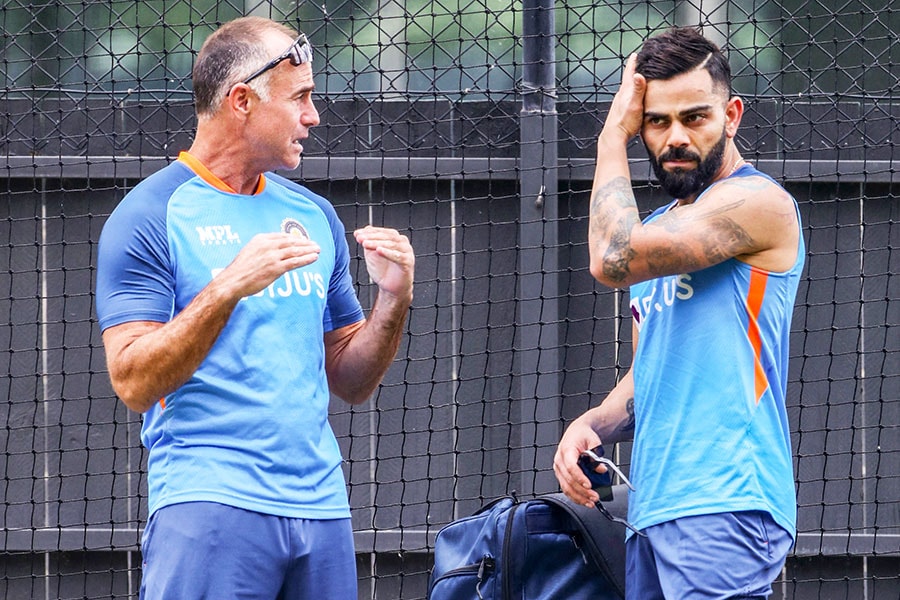
Kudos to Virat Kohli for speaking up when things weren't going his way: Paddy Upton
Acclaimed mental conditioning coach Paddy Upton on why the leadership must initiate a change in culture and how elite athletes can put mind over matter
 (File) Paddy Upton (L) talks to Virat Kohli during a practice session at the Adelaide Oval in Adelaide on November 9, 2022, on the eve of their ICC men's Twenty20 World Cup 2022 cricket semi-final match against England.
Image: Surjeet Yadav / AFP
(File) Paddy Upton (L) talks to Virat Kohli during a practice session at the Adelaide Oval in Adelaide on November 9, 2022, on the eve of their ICC men's Twenty20 World Cup 2022 cricket semi-final match against England.
Image: Surjeet Yadav / AFP
When Jacques Kallis went for months without a century, he sat down for a chat with Paddy Upton. To quote Upton, he didn't teach Kallis anything new, only helped him refocus. Soon after, the South African cricket legend went on to score centuries in five consecutive Test matches.
During coach Gary Kirsten’s tenure with the Indian cricket team between 2008 and 2011, which culminated with the victory in the 2011 World Cup, Upton was roped in as its mental conditioning coach. This was way before speaking on mental health had become prevalent. More recently, Virat Kohli turned to Upton to help him through a prolonged bad patch. Kohli’s return to form thereafter is for all to see.
How does Upton, once the strength and conditioning coach of the South African cricket team, help elite athletes build up mental resilience? He shares his thoughts on an episode with Sports UnLtd. Edited excerpts:
Q. You’ve been the mental conditioning coach of the Indian cricket team that won 2011 World Cup. Now you've been given a similar role with the men’s hockey team. What does a mental conditioning coach bring to a sports team?
The easier and the better-understood aspect is that the mind is one of the most important components of performance as the body or strategy or technical skill. But technical skill is easy to see, and you know where it's going wrong; for the body, it’s easy to measure fitness, speed, measure, flexibility etc, and easy to deal with. But the mind, we can't measure it. But we do know that years and years of training and preparation, for example, when a team goes into final, can fall over if the players mind isn't in the right space. The idea of a mental conditioning coach, generally, is someone who will come in and talk to the player and help them get their mind in the best possible space.







